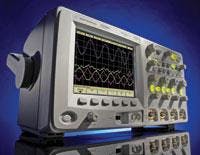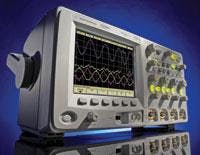Agilent Technologies Inc. in Santa Clara, Calif., is introducing serial bus triggering and real-time decode support for the company’s 5000 Series oscilloscopes that enhance analysis capability for embedded system developers. The new support helps give systems designers greater insight into CAN (controller area network), LIN (local interconnect network), I2C (inter-integrated circuit), SPI (serial peripheral interface), RS-232/UART, and USB (universal serial bus) serial buses. Having these capabilities in the 5000 Series eliminates the need for a more expensive bench scope and accelerates the troubleshooting process, Agilent officials say. CAN, LIN, I2C, SPI, RS-232/UART, and USB buses are for applications such as automotive control and chip-to-chip communications, and replace proprietary serial and parallel buses in embedded designs. “Unfortunately, designers have been unable to view these buses with their traditional portable oscilloscopes,” says Jay Alexander, vice president and general manager of Agilent’s oscilloscope business. “Until now, they’ve had to use more expensive bench oscilloscope models.” The Agilent 5000 Series oscilloscopes offer triggering for these buses as a standard feature. Current users can download firmware version 5.0 or higher from www.agilent.com/find/dso5000. There is no charge for the firmware download. For more information, visit Agilent online at www.agilent.com.
Voice your opinion!
Voice your opinion!




